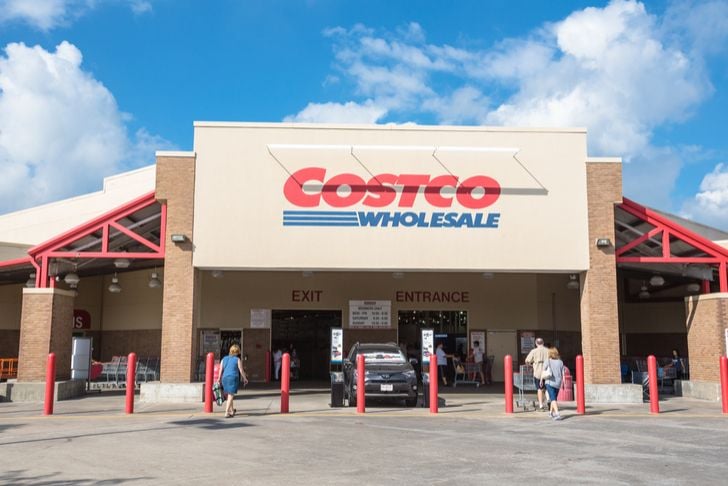For a few brief moments on Thursday and Friday of last week, Costco Wholesale Corporation (NASDAQ:COST) shareholders were in a bit of a panic. Although the club-based retailer reported impressive third-quarter results after Thursday’s closing bell rang, Costco stock started Friday’s action relatively deep in the red in light of its strong third quarter. Waning gross margins related to promotions spooked investors.
Shares have since (mostly) bounced back, having never gotten too deep into trouble in the first place. The short setback does suggest, however, that the market isn’t seeing Costco stock as the near-bulletproof name it once did.
Yet, those lingering doubts overlook the company’s proverbial method to the madness.
Red Flag
All in all, it was a good quarter. Revenue was up 12% to $32.3 billion, and earnings of $1.70 per share of Costco stock — up 7% — topped expectations of $1.69. Same-store sales, stripping out the benefit of higher gasoline prices, were up 7% last quarter, versus expectations for an improvement of 5.4%.
The problem? Profit margins fell 46 basis points to just a little over 11.0%, versus an anticipated figure of 11.4%.
Investors fear it may be the shape of things to come, as the warehouse retailer ramps up its fight against the likes of Amazon.com, Inc. (NASDAQ:AMZN) as well as Walmart Inc (NYSE:WMT), with a sweeping increase in hourly pay rates already underway also crimping margins.
Those investors aren’t wrong in drawing such a conclusion. The company made, among other moves, the rare move of lowering prices on certain items. It also beefed up its delivery options by acquiring equipment that will make it easier to fulfill same-day and two-day shipping. Meanwhile, newly-hired hourly employees will see their pay start at between $14.00 and $14.50 per hour, up $1.00 from the company’s prior starting rate.
It all looks like a step in the wrong direction, and by many measures it is. But, the heavier spending in the war for customers is simply the ‘new normal’ in retailing.
Welcome to the Party, Pal
It’s a reality no retailer cares to acknowledge, but when modern-day retailing is boiled down to its basics, the game is a test of willingness to offer the lowest price — and therefore accept the lowest profit — on the same goods rivals are selling.
Those waters are muddied, mind you. Bigger players have more scale than smaller outfits, and can often negotiate better wholesale prices. The adoption of technology has also allowed retailers to optimize deliveries. Those deliveries, in turn, have made same-day shipping possible in some localities, in some cases using a store as the shipping warehouse rather than an actual warehouse.
Although these costs don’t directly count as part of a particular product’s wholesale cost, effectively, all spending eventually comes off the bottom line.
The “trick,” ergo, is finding the optimal mix of product costs and ancillary spending that entices customers to choose you over a competitor.
When it’s all said and done though, Wal-Mart, Amazon.com and Costco (and plenty of others) can all more or less do what the other can do in terms of wholesale purchasing and promotional, business-building spending. At the end of the day, the war is going to be fought on the price front; who’s going to sell their widgets for the lowest price?
For ages that was Amazon, of course, for customers willing to pay for shipping and forego being able to get their hands on the item in question today. As was noted though, the lines have been blurred by a mix of free shipping for Amazon Prime customers, Wal-Mart’s foray into quick deliveries and same-day pickups of online orders. Pricing has also become a battleground.
If Costco is going to compete and stop those two other biggest rivals in their tracks, it has to be willing to more or less do what those two biggest rivals are doing.
Bottom Line for Costco Stock
The bottom line? If shrinking margins bug you as a Costco stockholder, get used to it. It’s not going to change anytime soon, if ever.
It’s an annoyance that’s worth it, though.
The company’s impressive improvement in membership fees last quarter is one piece of evidence to that end. Membership revenue was up 14% to $737 million last quarter, largely driven higher by rising fees that consumers were clearly willing to pay.
More than that though, the heavier spending paired with significant revenue growth and a membership renewal rate of right around 90% makes it clear that what Costco is doing is working. Better to sell more goods at lower margins than not sell as many goods at wider profit margins. Pulling people into the ecosystem and getting them to spend their money with you rather than somewhere else is the key, and Costco has gotten very, very good at that.
As of this writing, James Brumley did not hold a position in any of the aforementioned securities. You can follow him on Twitter, at @jbrumley.

